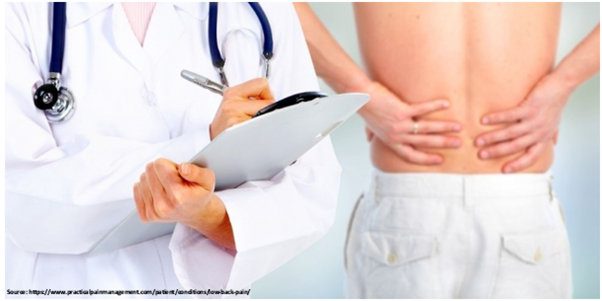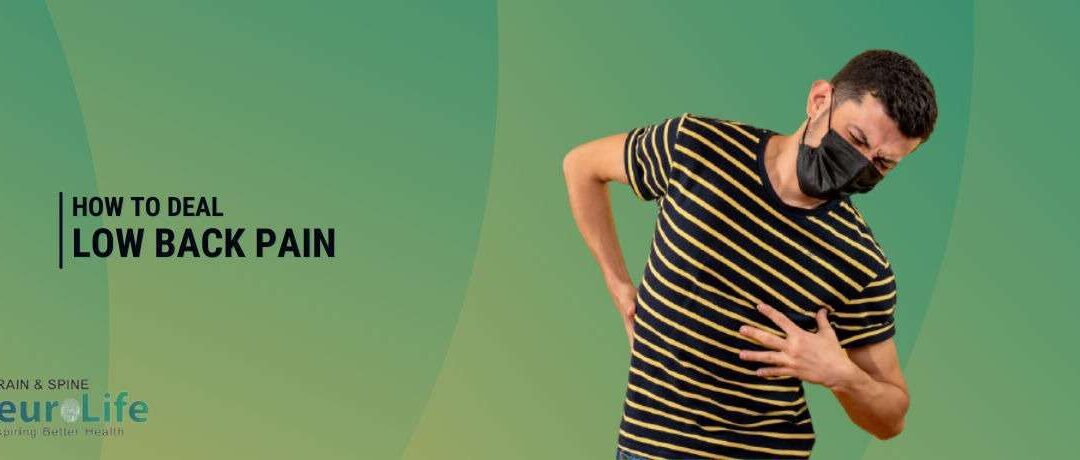The lumbar spine, or low back, is a complex network of nerves, bones, ligaments, joints, and muscles that work together to provide stability, strength, and mobility. On the other hand, the low back is prone to injury and pain due to its complex anatomy.
It is critical to get an accurate diagnosis that pinpoints the underlying cause of the pain rather than just correlating symptoms to guide treatment. You should always seek treatment from one of the best spine surgeon in Mumbai.
A well-qualified and experienced neurosurgeon or spine surgeon can accurately diagnose the root cause of the problem. Based on the diagnosis, the spine or neurosurgeon in Mumbai may recommend the best possible treatment.
This article lays out a framework for figuring out what causes low back pain and its treatment.
The most common cause of acute low back pain is an injury to the muscles, ligaments, joints, or discs. The body also mobilizes an inflammatory healing response in reaction to injury. While inflammation may appear to be minor, it can cause excruciating discomfort.
Now, let’s take a look at some of the structures that can cause back pain:

- Muscles
- Bones
- Joints
- Discs
- Nerve and
- Discomfort in various abdominal organs, which might manifest as back pain.
So, how do you figure out what’s causing your back pain? A basic understanding of what’s causing your back pain can help you find the correct physician for a consultation. There are a lot of elements to consider, but we will simplify them for you.
- Onset – Instant or gradual
- Location of the discomfort
- Level of severity – Moderate or severe
- Duration – Acute or chronic
- Characteristics such as radiating pain
- Exacerbating factors
- Relieving factors
Let’s describe,
What could be the cause of the back pain using the above parameters?
1. Muscle Pain
Muscle spasms are probably the most common cause of back discomfort. This can be found on both sides of the spine. It could happen suddenly after a jerky movement. It could occur gradually due to improper posture we adopt while working or doing other activities. Moments intensify the discomfort, which is eased by resting on either side of the spine.
2. Bone Pain
Bone pain is localized, severe pain is usually caused by sudden damage. Because of pre-existing osteoporosis of the spine, even minor trauma can result in fractures in the elderly. Movements worsen bone discomfort, which is eased by rest. Spine tenderness will be present.
3. Joints
There are several joints in the spine. Numerous disorders can affect the joints and produce discomfort. Localizing pain increases by movements and reduced by rest and is vaguer and more diffuse than muscle and bone pains.
The most commonly affected joints are the sacroiliac joints. These are positioned in the lower back on either side of the spine and have dimple-like depressions.
Various joint pains usually accompany these joint pains throughout the body. Occasionally, the pain occurs with a low-grade fever. Mornings are the worst for joint aches. The pain will lessen as the day passes.
4. Disc Pain
Disc pain is acute, localized pain on either side of the spine, mimicking muscular spasms.
5. Disc-Induced Nerve Root Pain
The most prevalent cause of pain. When a disc prolapse compresses a nerve, the pain begins in the back, near the spine, and mimics a muscle spasm. Later, the discomfort radiates down the back of the thigh and into the feet. The nerve is irritated as a result of the disc fragment. The sciatic nerve is compressed throughout its length, resulting in sciatica.
The prolapsed intervertebral disc that compresses the nerves forming the sciatic nerve is often the cause of sciatic discomfort. For a while, this pain will be felt like a backache. Then it will radiate to the legs as burning pain, paraesthesia, numbness, and trouble walking owing to pain.
Because the prolapsed intervertebral disc compresses the nerve, any movement of the spine aggravates the discomfort. Particularly, coughing and sneezing will worsen the pain. The pain will feel like an electrical shock as it travels down the lower limb.
6. Other causes
Renal calculi is a common ailment that mimics back discomfort. Back discomfort can be caused by stones in the kidney or ureter or the urinary bladder. The pain will be coupled with burning micturition in this case. It will radiate to the groin area. Back discomfort might be caused by uterine disorders, ovarian diseases, or major bowel problems.
Now, let’s know about,
Treatment of Low Back Pain
Medical treatments aim to alleviate discomfort. But they do not address the fundamental cause of the problem. The doctor usually prescribes medicines in conjunction with a physical therapy program or another regimen by a doctor.
The following are some of the treatment options:
- Muscle relaxants:
Muscle relaxants are drugs that relax the muscles. This medicine operates as a central nervous system depressant, increasing muscle mobility and alleviating discomfort from muscle tightness or spasms.
- Narcotic pain medications:
Benzodiazepines are narcotic pain relievers. Narcotic drugs, commonly known as opioids or painkillers, decrease pain impulses transmitted to the brain. Narcotic pharmaceuticals are most widely used to relieve severe, short-term pain, such as pain following surgery.
- Braces for the back:
A back brace may help provide comfort and maybe reduce discomfort for some people.
- Epidural steroid injections:
The spine specialist will inject a steroid directly into the outer section of the dural sac, which surrounds the spinal cord. Fluoroscopy, or live X-ray, is utilized to guide the needle to the correct location. The injection’s purpose is to ease pain momentarily by lowering inflammation surrounding a compressed nerve root.
- Surgery:
If severe low back pain does not alleviate following a six to twelve-week course of nonsurgical therapy, surgery may be considered. Back surgery is nearly usually a patient’s choice, and only in rare cases, emergency surgery for low back pain is conducted.
With this fundamental understanding of the causes of back pain, the patient can assess the source of the pain and seek treatment from the top neurosurgeon in Mumbai.

